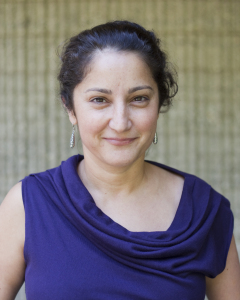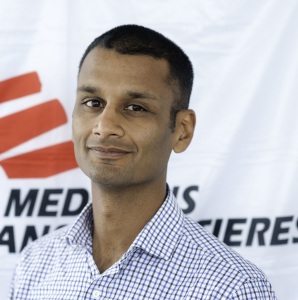When people think about medical humanitarian aid, the usual association is with war zones and natural disasters, and the assumption is that the most critical medical needs are concentrated in the world’s poorest countries. That’s mostly right, but not entirely.
While the needs of low income countries remain huge, there are large—and growing—populations excluded from access to healthcare who now live in countries classified as middle income countries (MIC). This shift presents enormous challenges, particularly in accessing new lifesaving drugs and vaccines for diseases that take a disproportionately high toll on poor, marginalized populations.
For us at Médecins Sans Frontières (MSF), an organization providing emergency medical aid to people in acute need, the bulk of our resources are placed in countries classified as low income economies. But over half of the countries where we now have programs are classified as middle (or high) income economies. These programs range from short term emergency responses, for example, after last year’s Typhoon Haiyan in the Philippines; to aid for ongoing refugee emergencies in Iraq, Jordan, and Lebanon; to treatment programs for chronic and neglected diseases in India and South Africa.
Today more than 100 diverse economies are classified as MIC. They are home to about five billion of the world’s 7.1 billion people, and hold more than three quarters of the world’s poorest people, who live on less than $2 per day—largely owing to enormous and rising levels of inequality.
Yet the rising economic indicators that land a country in the MIC club in turn often exclude those countries from accessing the lowest prices for medicines and vaccines, because of tiered pricing and other market segmentation strategies employed by pharmaceutical companies—and, increasingly, by donors, governments, and international organizations too. In many MICs, healthcare costs are primarily paid out of pocket, so it follows that many poor and marginalized people have little or no access to care.
A good illustration of the problem comes from many of the newer, more expensive vaccines, such as the pneumococcal conjugate vaccine (PCV) against pneumonia, rotavirus vaccine against diarrhea, or human papillomavirus vaccine against cervical cancer. Gavi, the Vaccine Alliance, which receives substantial government and philanthropic funding to support the introduction of new vaccines in low income countries, has negotiated some of the lowest known prices for these vaccines.
However, Gavi’s current policies mean these price discounts are only available to a select group of the poorest “Gavi-eligible” countries. More than 25% of Gavi-eligible countries will soon lose Gavi support when they pass the eligibility threshold of $1570 gross national income (GNI) per capita. When these countries are no longer Gavi-eligible, according to what we consider a GAVI conservative estimate, countries will have to pay at least sixfold more for PCV when they lose access to negotiated prices. And, even more worryingly, a 2013 report concluded that many MICs are lagging behind in introducing some or all of these vaccines, and that price was an important barrier for nine of the 15 countries examined. As of September 2012, 84% and 80% of the birth cohort in MICs had not benefited from PCV and rotavirus vaccine introduction, respectively.
Another example is the difficulty faced by MICs in accessing the first new medicines approved for drug resistant tuberculosis (DR-TB) in over 40 years—despite the fact that some of the countries with the highest burden of the disease are MICs, including Armenia, India, Ukraine, Uzbekistan, and South Africa, where MSF has DR-TB programs. After a decades long drought of new TB medicines, two new medicines were recently approved for treating the most severe forms of DR-TB: bedaquiline (from Janssen) and delamanid (from Otsuka).
However, several barriers—including the lack of research on using these drugs in regimens, the lack of registration in endemic countries, and high prices—mean that these two drugs are not yet routinely used outside the United States and Europe, except through compassionate use or clinical access programs. MSF recently signed an open letter from leading public health officials and civil society groups asking Janssen to lower the MIC price for bedaquiline, which is currently US$3000 for a course of treatment.
Groundbreaking new medicines for hepatitis C are yet another example of the access challenge facing MICs. An estimated 150 million people worldwide have hepatitis C, 73% of whom live in MICs. While MSF’s medical response has been limited so far, we will soon open treatment programs in several MICs, including Egypt, India, Iran, and Ukraine. The introduction of new oral direct-acting antivirals (DAAs) has the potential to substantially simplify and improve treatment of the disease, but high prices threaten to restrict scale-up.
Very recently, Gilead signed voluntary license agreements with several Indian generic manufacturers to produce affordable versions of a DAA, sofosbuvir, and another new hepatitis C drug (ledipasvir). But the agreement excludes 51 MICs, which collectively have more than 50 million people estimated to be living with hepatitis C. Among them, China, Thailand, and Ukraine account for approximately 30 million, 1.5 million, and 1.9 million people with hepatitis C, respectively.
What can be done to reduce these barriers for people in MICs whose lives depend on access to these and other lifesaving medical innovations? Countries, patients, and treatment providers should be empowered to use a range of legal and policy tools, including the promotion of robust generic competition.
But MICs are increasingly the target of intense pressure to move in the opposite direction by increasing intellectual property protection in ways that keep medicine prices high—and in line with multinational pharmaceutical company ambitions, which seek to tap into profitable, rapidly growing market segments within MICs. This makes it even more important for governments, global health institutions, and organizations like MSF to work towards overcoming these barriers. For example, by preventing the adoption of harmful rules that would stifle generic competition (through trade deals, such as the Trans-Pacific Partnership), and by supporting important efforts to reform patent law, such as those underway in South Africa and Brazil.
Today, millions of people can’t benefit from groundbreaking new treatments and vaccines. We need solutions and strategies that promote affordable access for all people based on medical need, rather than their country’s macroeconomic classification, because innovation without access cannot truly be counted as innovation.
 Judit Rius Sanjuan, a lawyer from Barcelona, Spain, is US manager and legal policy advisor of the Access Campaign at Médecins Sans Frontières/Doctors Without Borders in New York.
Judit Rius Sanjuan, a lawyer from Barcelona, Spain, is US manager and legal policy advisor of the Access Campaign at Médecins Sans Frontières/Doctors Without Borders in New York.
Competing interests: Nothing to declare.
 Rohit Malpani, also a lawyer, serves as director of policy and analysis at the Access Campaign and is based in Paris.
Rohit Malpani, also a lawyer, serves as director of policy and analysis at the Access Campaign and is based in Paris.
Competing interests: Nothing to declare.
Editor’s note: The World Health Organization (WHO), World Intellectual Property Organization (WIPO), and World Trade Organization (WTO) will hold a technical symposium on “Innovation and access to medical technologies: challenges and opportunities for middle income countries” on 5 November 2014 at the WTO in Geneva.
